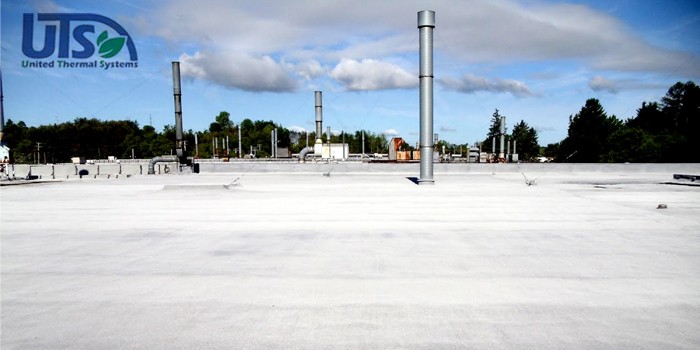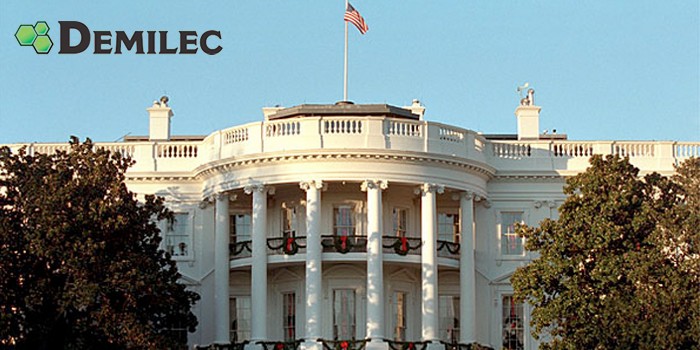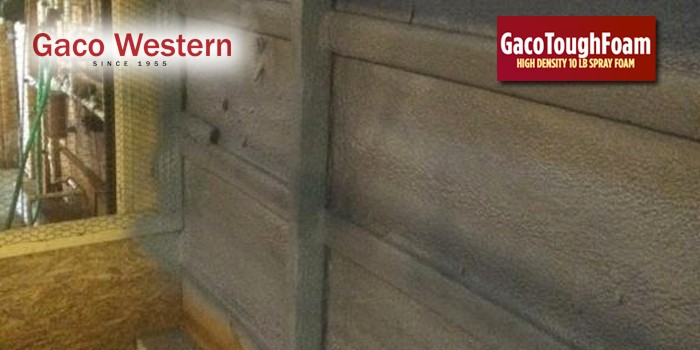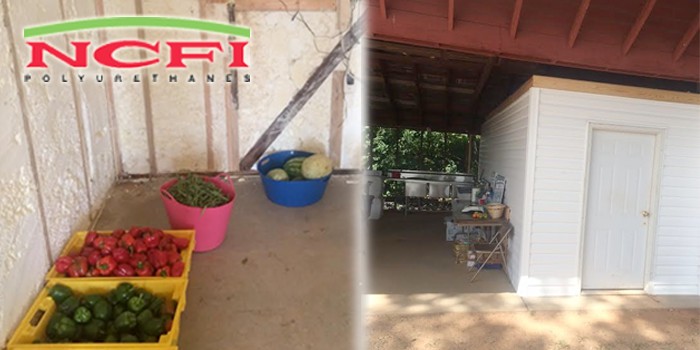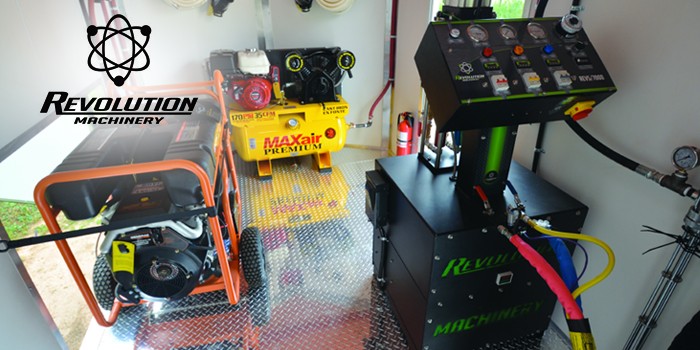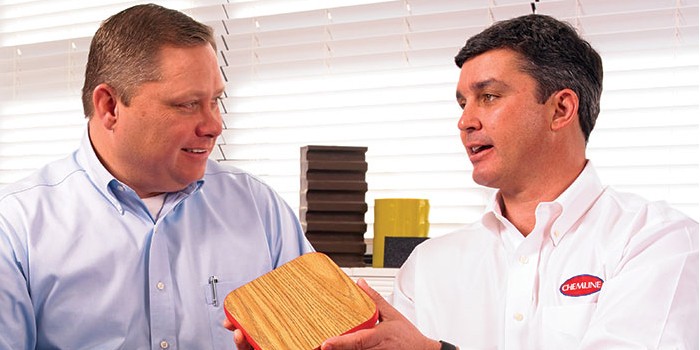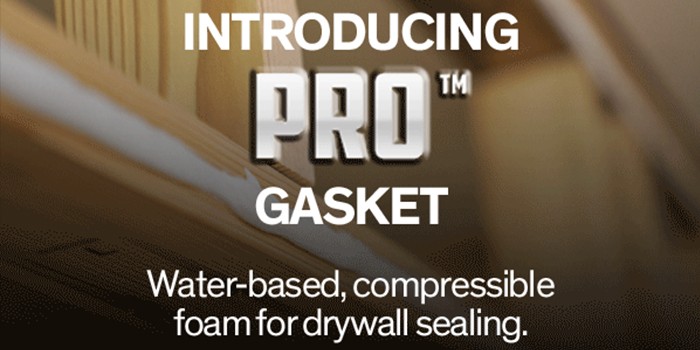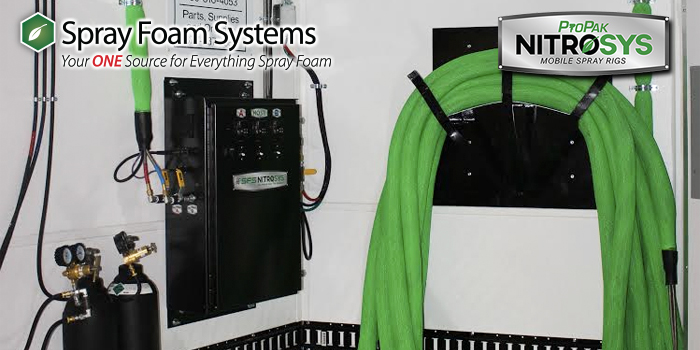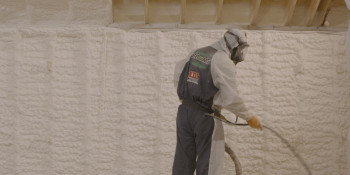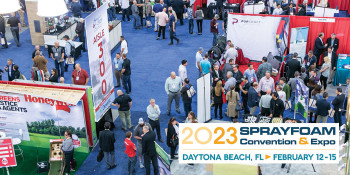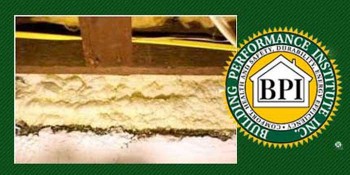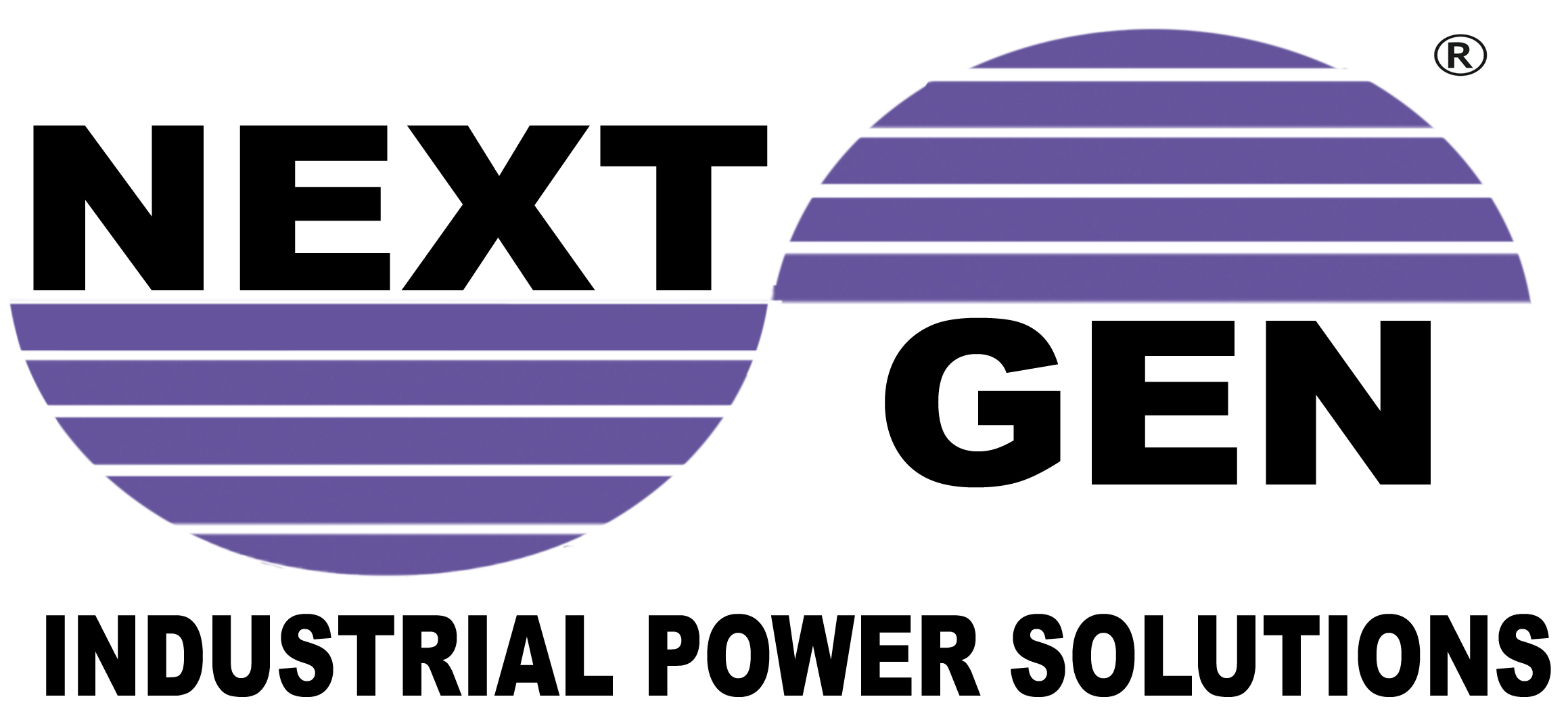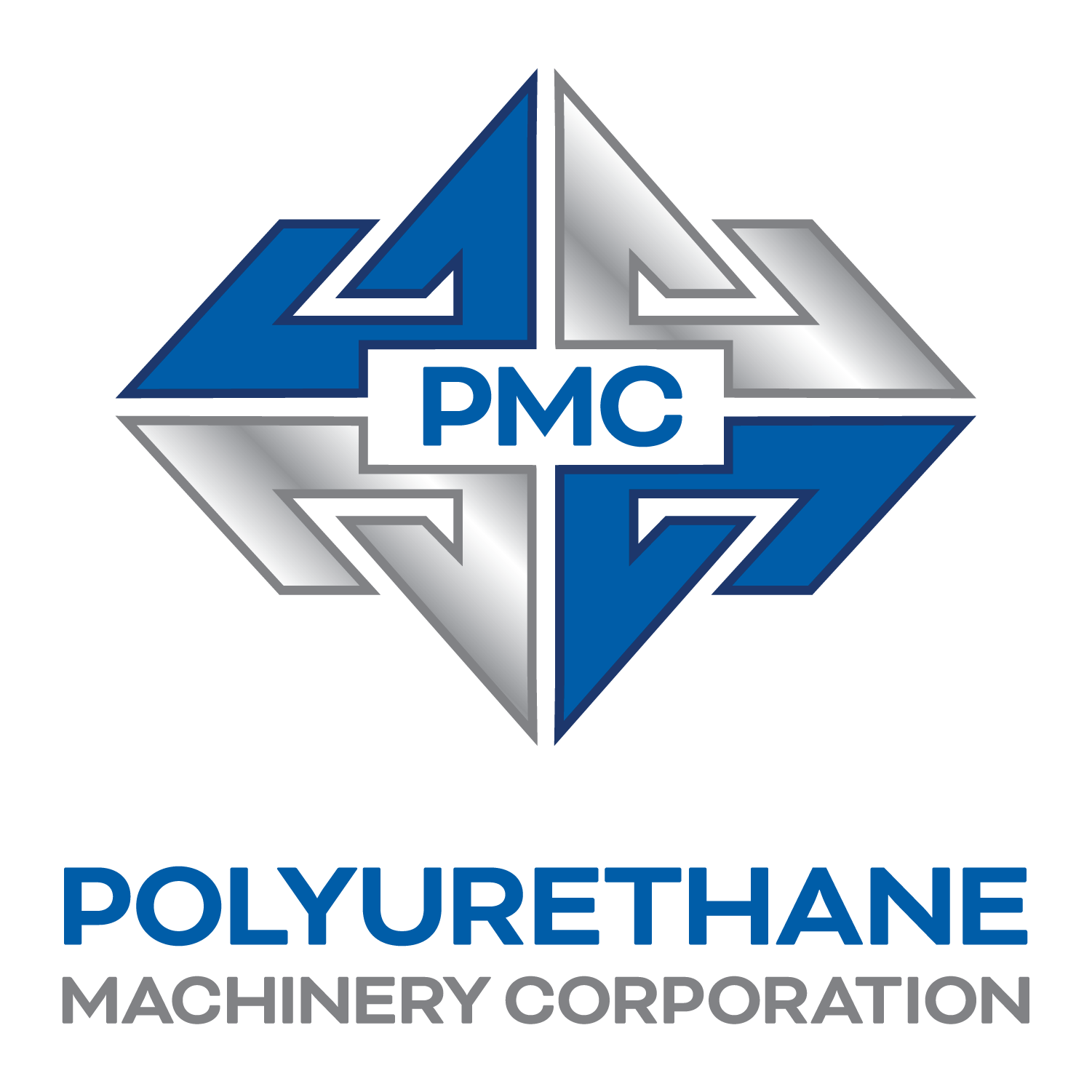“Longer Life at a Lower Cost” - A Thorough Spray Foam (SPF) Roofing Education
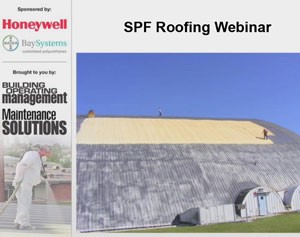
December 9, 2008 - WorldWideWeb - Building Operating Management and Maintenance Solutions magazines presented a webinar on December 9th that focused on spray foam’s ability to decrease a roof’s lifecycle cost. The webinar, titled “Longer Life at a Lower Cost” was sponsored by Honeywell and Bay Systems and moderated by Greg Zimmerman, Executive Editor of Building Operating Management magazine.
The webinar discussed a wide range of benefits that spray foam roofing has to offer and was presented by two of the industry’s most knowledgeable professionals: Mason Knowles, President of Mason Knowles Consulting LLC and Wally Scoggins, President of Brazos Urethane, Inc. Additionally, a case study was presented by Bill Wiseheart, Director of Facilities at New Albany-Floyd County Consolidated School Corporation.
A brief survey prior to the start of the webinar showed that most of the participants were “Not Very Familiar” with spray foam and its advantages, but this quickly changed.
Wally Scoggins, who has been in the industry since 1969, was the first presenter. He began by speaking about the waterproof characteristics of spray foam. He pointed out that climate change, subsidence and high winds can all affect seals during and after construction. Further, conventional methods such as sealants, adhesives and rubber boots often fall short when it comes to waterproofing penetrations in the roof surface. Spray foam, on the other hand, is an ideal solution to address this issue due to the fact that it becomes waterproof immediately upon application. Wally then showed some examples of spray foam used for this purpose.
Next, Wally discussed spray foam’s insulative attributes. While the most common insulation used for interior construction are fiberglass batts and/or rolls, spray foam is a superior method. Foam board stock is the most common commercial roofing insulation. Traditionally, roof panel termination points are sealed using molded foam rubber closure strips which can be easily damaged during installation or over the life of the product by UV rays, animals or insects. Alternatively, spray foam provides high R-value insulation while effectively sealing the building envelope. More examples were then shown focusing on this benefit.
Subsequently, Wally mentioned the structural benefits of spray foam. He pointed out that it can increase structural strength of a metal roof by up to 1000%, depending on foam density and thickness. The adhesion of spray foam is “so tenacious that it ‘unitizes’ the panels together and eliminates all deflection from foot traffic” on the roof. The waterproofing, insulation and structural benefits of spray foam all decrease maintenance costs while extending the life of the roof.
Next, to illustrate the benefits when it comes to wind uplift, Wally offered a case study of the Louisiana Superdome after Hurricane Katrina. The hurricane’s intense winds destroyed the roof, causing $250 million in damages. The state of Louisiana demanded a roof that “will never blow-off again”, and selected BaySystems for this warranty. Spray foam roofing and elastomeric coatings were selected. The roof was covered with BaySystems Bayseal 3.0lb roofing foam and Neogard Permathane 3 elastomeric coating. BaySystems provided the warranty, a hurricane-proof, unlimited-wind warranty.
Mason Knowles, with more than 38 years experience in the spray polyurethane roofing industry, was the next presenter. Knowles is active in building code and regulatory activity and regularly writes articles for national trade journals and provides presentations for trade groups and other organizations on the SPF industry.
Mason began by offering some facts about metal roofs. He mentioned that 50% of all commercial buildings utilize metal roofing systems or decking. These roofs typically have a 15 – 30 year life span before serious maintenance is to be expected. Some of the factors affecting long term performance include thermal shock movement, moisture condensation, uncontrolled air movement, thermal bridging, radiant heat conduction and energy efficiency. As far as the cost savings available, spray foam roofing systems cost $3 to $5 per square foot while metal panel and roof replacement costs $10 to $13 per square foot. He cited studies conducted by the Performance Based Studies Research Group (PBSRG) at Arizona State University indicating foam roofs had a 96.5% customer satisfaction rate. Furthermore, a host of energy saving features add to the cost savings of spray foam over the life of the roof. These include the elimination of thermal bridging, high r-value per inch, its effectiveness as an air barrier, and its quality as a light colored, reflective coating. Additionally, since it is applied above the roof deck, it provides more effective insulation.
He then reiterated Wally’s example earlier regarding spray foam’s wind uplift performance. Mason cited that RICOWI (Roofing Industry Committee On Weather Issues, Inc.) has documented its performance in Hurricanes Charley, Ivan, Jeanne, Francis, Katrina, Dolly and Ike. Additionally, UL & FM tests demonstrate the enhanced and superior wind uplift resistance of existing roof coverings.
Mason closed by providing a brief overview of spray foam roofing’s benefits, all of which reduce cost while increasing the roof’s lifecycle. As examples, he mentioned its energy efficiency, durability, minimal leaks from impact, low maintenance renewable quality and its low environmental impact.
The final section of the webinar was an interview with Bill Wiseheart, Director of Facilities at New Albany-Floyd County Consolidated School Corporation. The New Albany-Floyd County Consolidated School Corporation covers all of Floyd County in southeastern Indiana. The over 25 facilities in the county occupy about 2.5 million square feet. Currently, 18 of the buildings are centrally managed and monitored for energy management. The system includes hundreds of controllers and thousands of individual control points to operate the HVAC systems and maintain comfort conditions
The Facilities Department is responsible for all maintenance, custodial services, energy management and regulatory compliance in addition to coordinating and managing construction projects for the School Corporation.
The interview focused on a re-roofing project that took place 18 years ago at the Prosser School of Technology in New Albany, IN. The project was undertaken due to age related leakage in the 146,000 square foot steel roof structure. He chose spray foam because of positive prior experience, ease of maintenance and its insulation qualities. The school realized over $10,000 in energy savings the first year alone and equivalent savings have continued annually! During Hurricane Ike’s 75-100 mph winds, there was extremely minor damage to the steel deck and the spray foam was virtually unscathed. Another test to the roof came when student mechanics at the school set a car on fire in the body shop. The flame retardant quality of the foam kept the fire from spreading. The school system has future plans to utilize spray foam roofing on 100% of its buildings through re-roofing projects as well as using it in new construction and building additions.
The informative program ended with a question and answer session. Overall, the webinar covered a lot of information, offering the participants a solid overview of spray foam’s benefits when utilized on metal roofs as well as in other applications.
The complete webinar is online and can be viewed at: http://www.facilitiesnet.com/webcasts/details.asp?id=19029
The webinar discussed a wide range of benefits that spray foam roofing has to offer and was presented by two of the industry’s most knowledgeable professionals: Mason Knowles, President of Mason Knowles Consulting LLC and Wally Scoggins, President of Brazos Urethane, Inc. Additionally, a case study was presented by Bill Wiseheart, Director of Facilities at New Albany-Floyd County Consolidated School Corporation.
A brief survey prior to the start of the webinar showed that most of the participants were “Not Very Familiar” with spray foam and its advantages, but this quickly changed.
Wally Scoggins, who has been in the industry since 1969, was the first presenter. He began by speaking about the waterproof characteristics of spray foam. He pointed out that climate change, subsidence and high winds can all affect seals during and after construction. Further, conventional methods such as sealants, adhesives and rubber boots often fall short when it comes to waterproofing penetrations in the roof surface. Spray foam, on the other hand, is an ideal solution to address this issue due to the fact that it becomes waterproof immediately upon application. Wally then showed some examples of spray foam used for this purpose.
Next, Wally discussed spray foam’s insulative attributes. While the most common insulation used for interior construction are fiberglass batts and/or rolls, spray foam is a superior method. Foam board stock is the most common commercial roofing insulation. Traditionally, roof panel termination points are sealed using molded foam rubber closure strips which can be easily damaged during installation or over the life of the product by UV rays, animals or insects. Alternatively, spray foam provides high R-value insulation while effectively sealing the building envelope. More examples were then shown focusing on this benefit.
Subsequently, Wally mentioned the structural benefits of spray foam. He pointed out that it can increase structural strength of a metal roof by up to 1000%, depending on foam density and thickness. The adhesion of spray foam is “so tenacious that it ‘unitizes’ the panels together and eliminates all deflection from foot traffic” on the roof. The waterproofing, insulation and structural benefits of spray foam all decrease maintenance costs while extending the life of the roof.
Next, to illustrate the benefits when it comes to wind uplift, Wally offered a case study of the Louisiana Superdome after Hurricane Katrina. The hurricane’s intense winds destroyed the roof, causing $250 million in damages. The state of Louisiana demanded a roof that “will never blow-off again”, and selected BaySystems for this warranty. Spray foam roofing and elastomeric coatings were selected. The roof was covered with BaySystems Bayseal 3.0lb roofing foam and Neogard Permathane 3 elastomeric coating. BaySystems provided the warranty, a hurricane-proof, unlimited-wind warranty.

New Orleans Superdome with Spray Foam Roof
Mason Knowles, with more than 38 years experience in the spray polyurethane roofing industry, was the next presenter. Knowles is active in building code and regulatory activity and regularly writes articles for national trade journals and provides presentations for trade groups and other organizations on the SPF industry.
Mason began by offering some facts about metal roofs. He mentioned that 50% of all commercial buildings utilize metal roofing systems or decking. These roofs typically have a 15 – 30 year life span before serious maintenance is to be expected. Some of the factors affecting long term performance include thermal shock movement, moisture condensation, uncontrolled air movement, thermal bridging, radiant heat conduction and energy efficiency. As far as the cost savings available, spray foam roofing systems cost $3 to $5 per square foot while metal panel and roof replacement costs $10 to $13 per square foot. He cited studies conducted by the Performance Based Studies Research Group (PBSRG) at Arizona State University indicating foam roofs had a 96.5% customer satisfaction rate. Furthermore, a host of energy saving features add to the cost savings of spray foam over the life of the roof. These include the elimination of thermal bridging, high r-value per inch, its effectiveness as an air barrier, and its quality as a light colored, reflective coating. Additionally, since it is applied above the roof deck, it provides more effective insulation.

SPF Roofing Customer Satisfaction Survey
Mason also pointed out the benefits offered by spray foam’s building envelope characteristics such as reduced energy use and reduced thermal bridging as well as its effectiveness as an air infiltration barrier, weather barrier and second line of defense against moisture. Mason added that it maintains its physical properties over time, offering a long lifespan with low maintenance.He then reiterated Wally’s example earlier regarding spray foam’s wind uplift performance. Mason cited that RICOWI (Roofing Industry Committee On Weather Issues, Inc.) has documented its performance in Hurricanes Charley, Ivan, Jeanne, Francis, Katrina, Dolly and Ike. Additionally, UL & FM tests demonstrate the enhanced and superior wind uplift resistance of existing roof coverings.
Mason closed by providing a brief overview of spray foam roofing’s benefits, all of which reduce cost while increasing the roof’s lifecycle. As examples, he mentioned its energy efficiency, durability, minimal leaks from impact, low maintenance renewable quality and its low environmental impact.
The final section of the webinar was an interview with Bill Wiseheart, Director of Facilities at New Albany-Floyd County Consolidated School Corporation. The New Albany-Floyd County Consolidated School Corporation covers all of Floyd County in southeastern Indiana. The over 25 facilities in the county occupy about 2.5 million square feet. Currently, 18 of the buildings are centrally managed and monitored for energy management. The system includes hundreds of controllers and thousands of individual control points to operate the HVAC systems and maintain comfort conditions
The Facilities Department is responsible for all maintenance, custodial services, energy management and regulatory compliance in addition to coordinating and managing construction projects for the School Corporation.
The interview focused on a re-roofing project that took place 18 years ago at the Prosser School of Technology in New Albany, IN. The project was undertaken due to age related leakage in the 146,000 square foot steel roof structure. He chose spray foam because of positive prior experience, ease of maintenance and its insulation qualities. The school realized over $10,000 in energy savings the first year alone and equivalent savings have continued annually! During Hurricane Ike’s 75-100 mph winds, there was extremely minor damage to the steel deck and the spray foam was virtually unscathed. Another test to the roof came when student mechanics at the school set a car on fire in the body shop. The flame retardant quality of the foam kept the fire from spreading. The school system has future plans to utilize spray foam roofing on 100% of its buildings through re-roofing projects as well as using it in new construction and building additions.
The informative program ended with a question and answer session. Overall, the webinar covered a lot of information, offering the participants a solid overview of spray foam’s benefits when utilized on metal roofs as well as in other applications.
The complete webinar is online and can be viewed at: http://www.facilitiesnet.com/webcasts/details.asp?id=19029
Disqus website name not provided.




